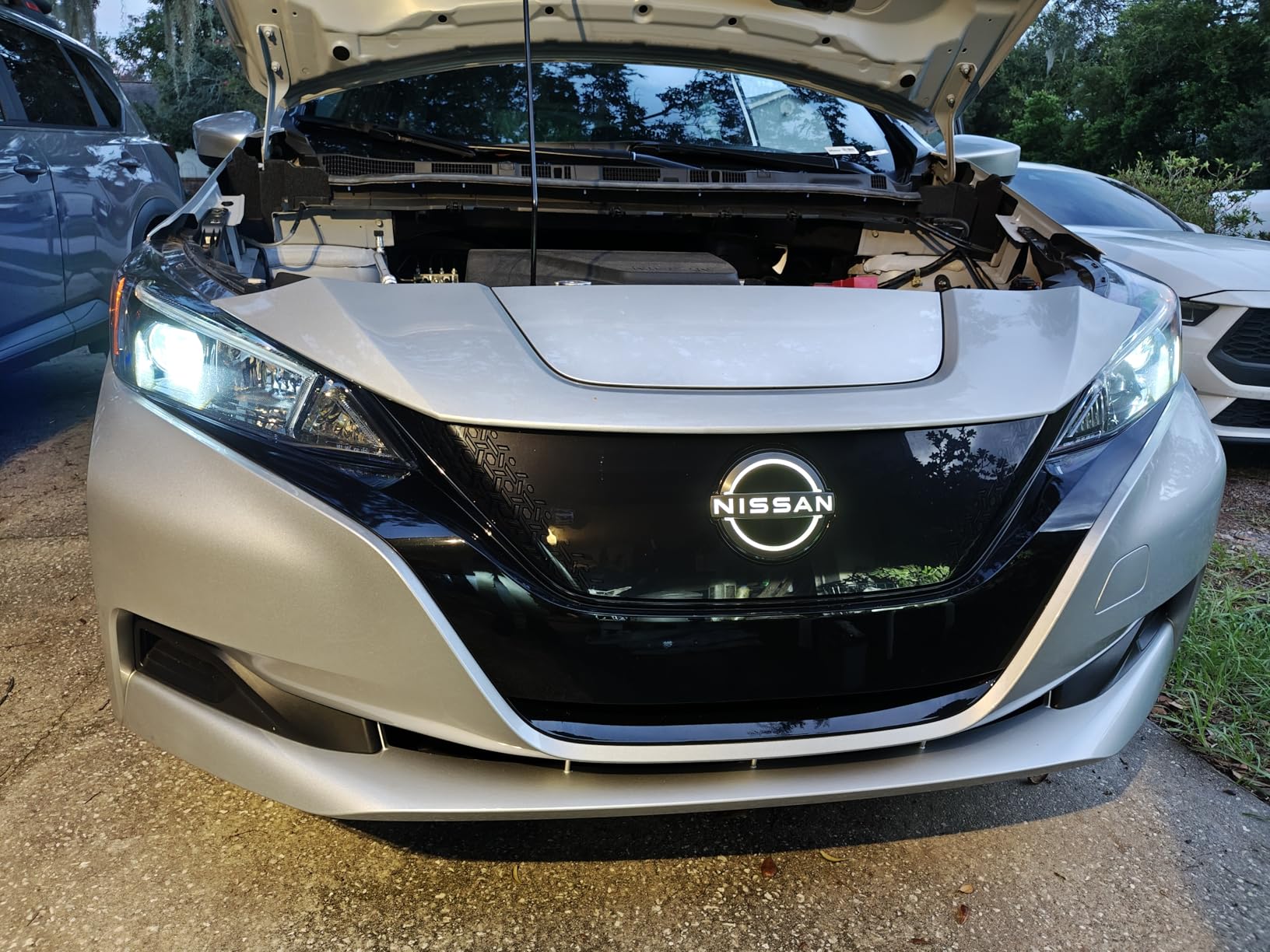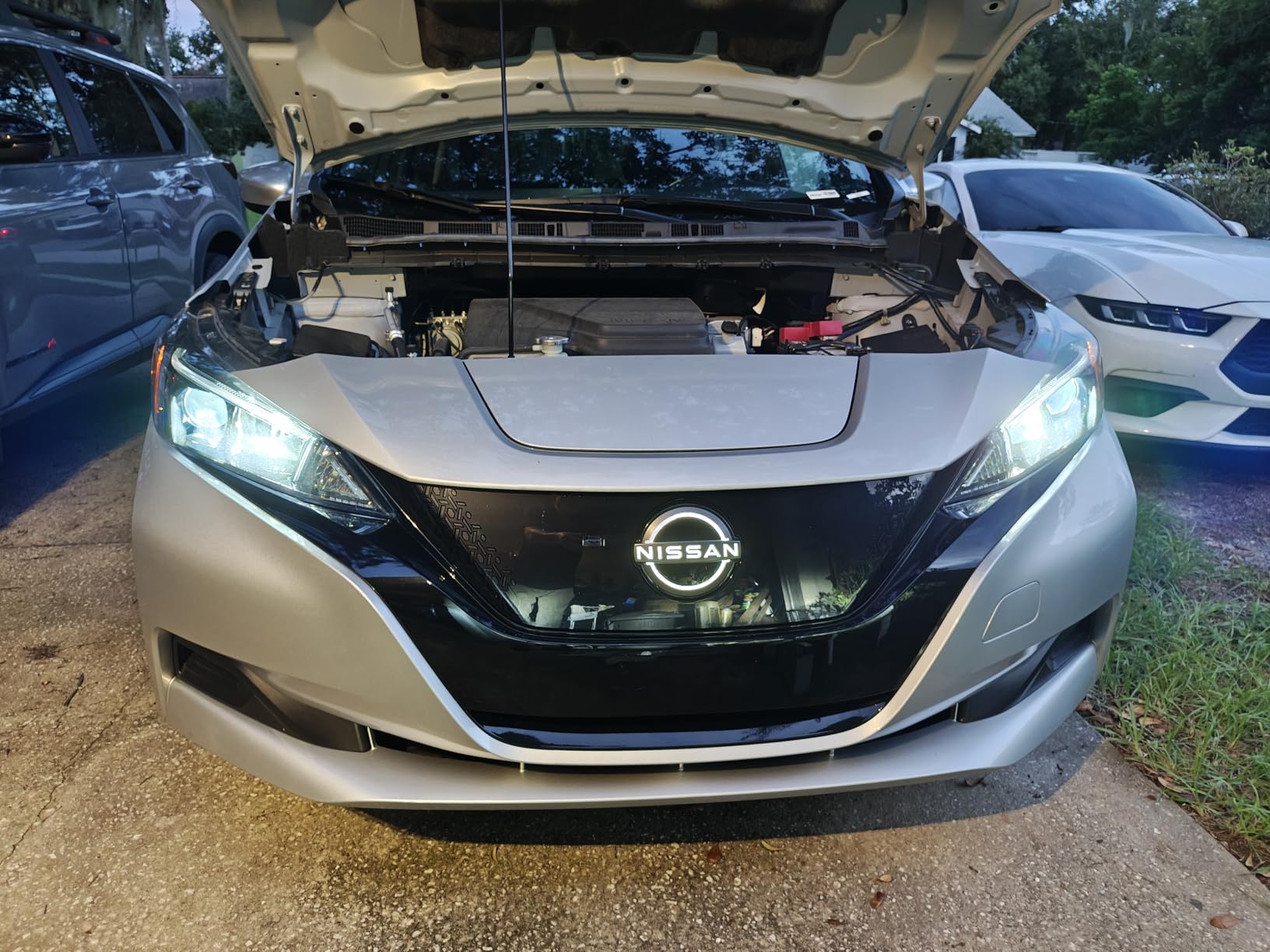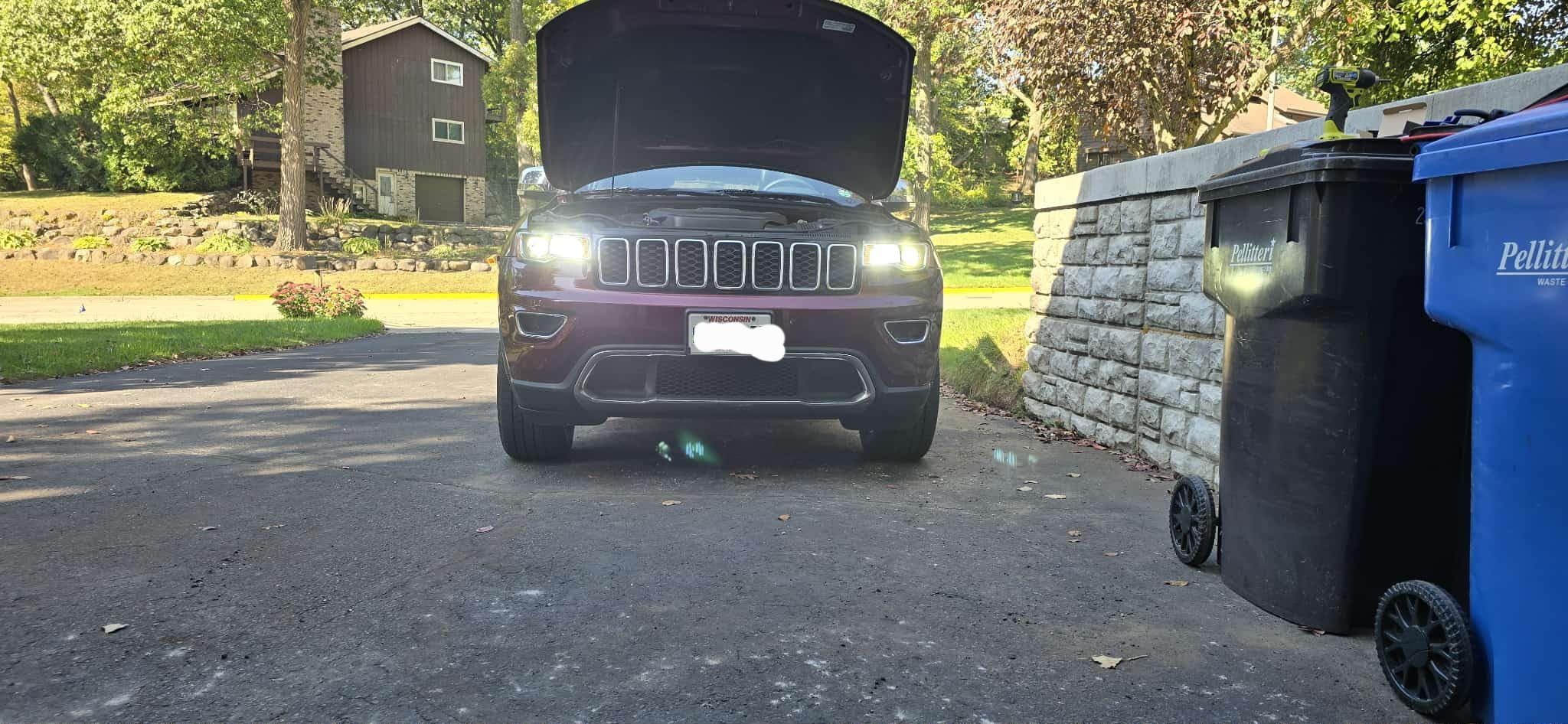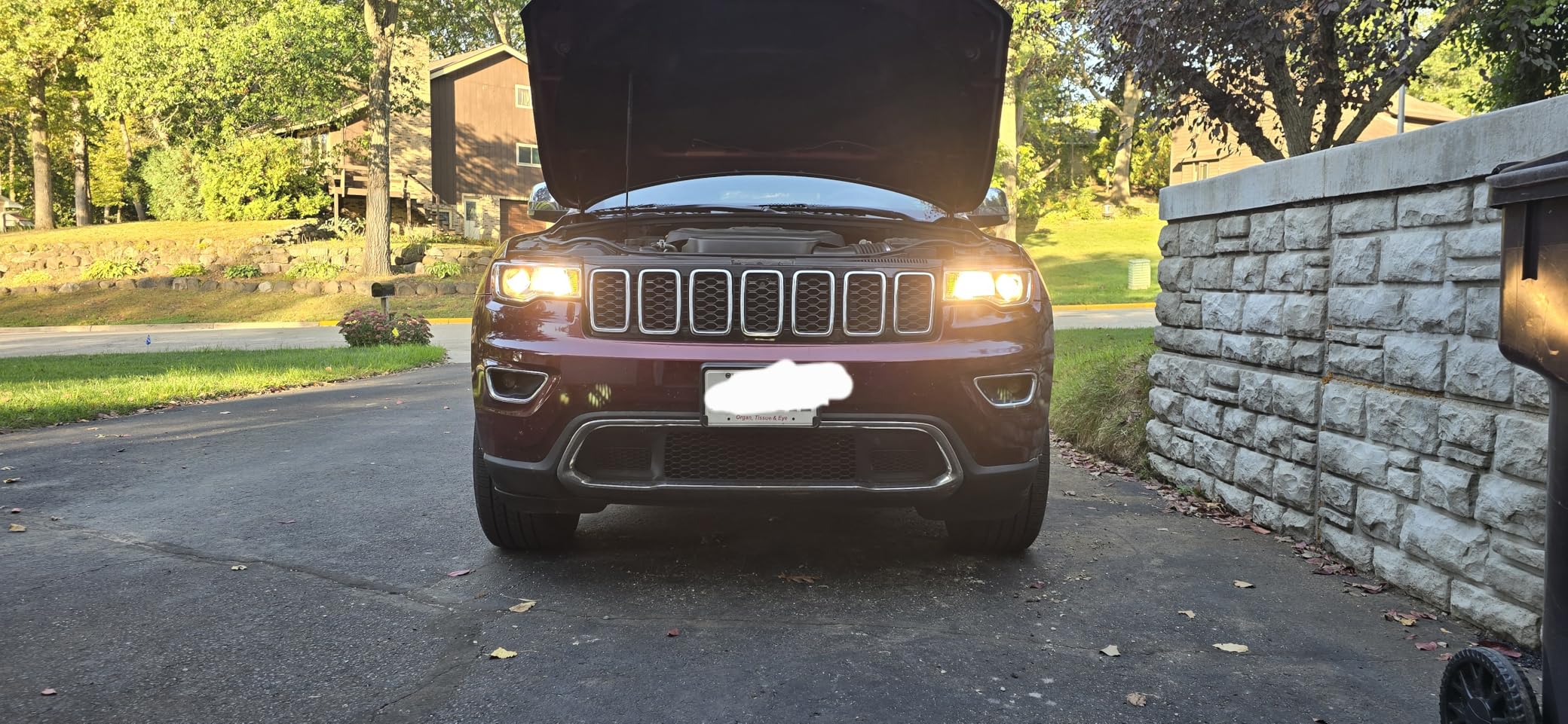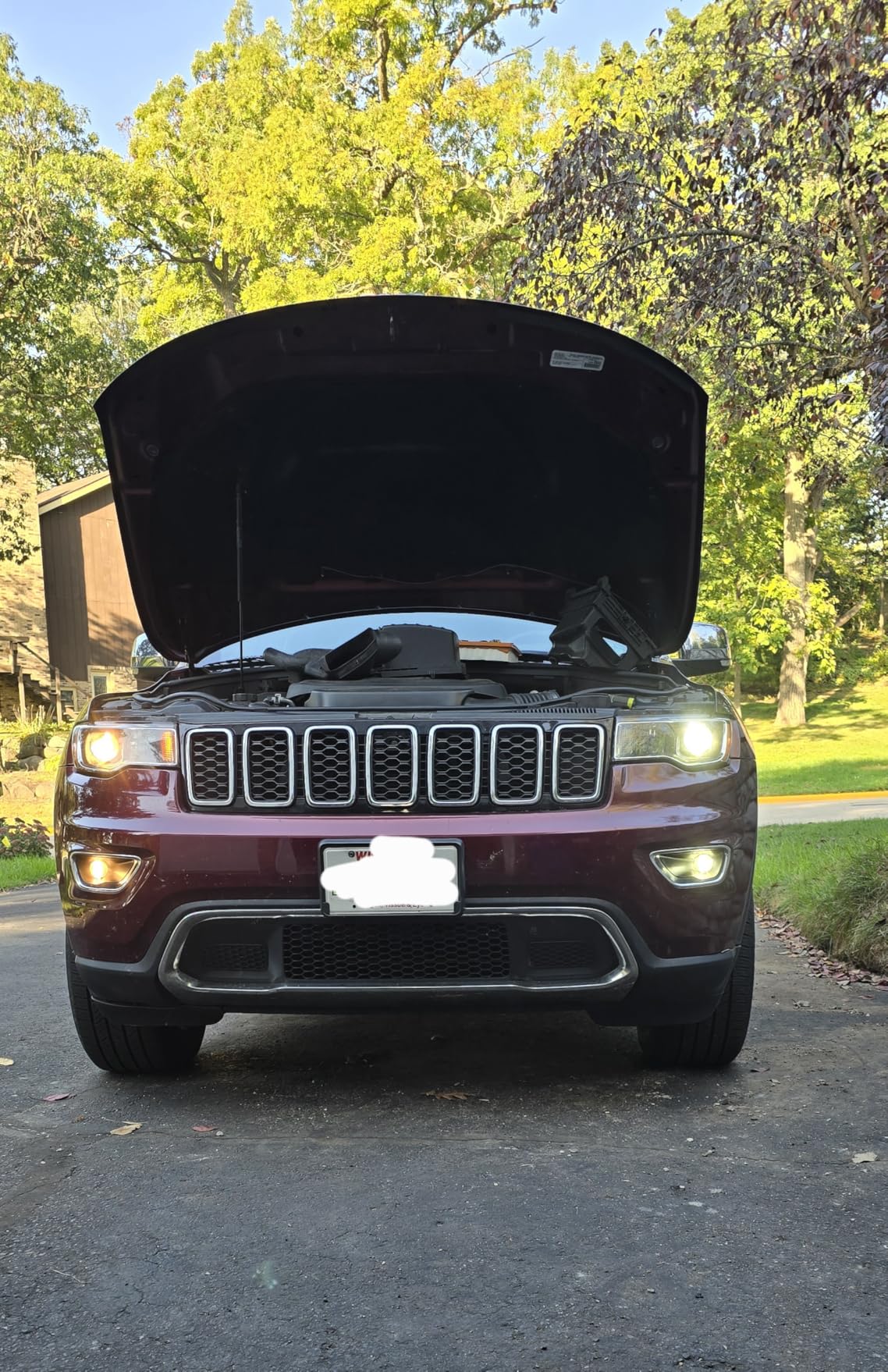If you've driven at night recently, you've probably experienced it—that piercing, blinding light from oncoming vehicles that leaves you momentarily unable to see the road ahead. You're not alone. With the widespread adoption of LED headlights in modern vehicles, nighttime driving has become increasingly challenging for many motorists. This article explores why LED headlights can be so problematic and offers practical solutions to help you stay safe on the road.
Why Are LED Headlights So Bright?
LED (Light Emitting Diode) headlights are now standard equipment on most new vehicles, replacing the traditional halogen bulbs. While they offer numerous benefits, they also bring a gigantic issue to other drivers.
LED headlights shine brighter due to several significant reasons:
- They produce a greater number of lumens (amount of light output) than typical halogen bulbs, creating a stronger beam
- LED bulbs emit a bluer, more 6000K-like light compared to the warm yellow halogen glow (around 3200K)
- Blue-white light is brighter to the human eye and more likely to cause discomfort
- Most LED headlights are either fitted or aimed in the wrong direction, directing light upwards at oncoming motorists' eyes rather than downwards at the road
Although designers of LED headlights attempt to increase the driver's own visibility through them, it typically comes at others' expense.
7 Ways to Manage Blinding LED Headlights
1. Adjust Your Mirrors Properly
One of the most effective ways to reduce glare is to properly adjust your mirrors:
- Use the night setting on your rearview mirror by flipping the small lever at the bottom, which changes the angle to reduce light intensity
- For cars with automatic dimming mirrors, ensure this feature is activated
- Adjust your side mirrors slightly downward so headlights from vehicles behind you don't shine directly into your eyes
- Consider aftermarket auto-dimming mirrors if your vehicle doesn't have them
These simple adjustments can significantly reduce the amount of glare that reaches your eyes, especially from vehicles behind you.
2. Use Your Visor and Sunglasses
While primarily designed for daytime use, these tools can help with nighttime glare:
- Position your sun visor to block headlights from taller vehicles or those on hills
- Consider clear glasses with anti-reflective coating, which can reduce glare without compromising night vision
- Avoid yellow "night driving" glasses, which many vision experts don't recommend as they can actually reduce overall visibility
Remember that standard sunglasses are not recommended for night driving as they reduce overall visibility, making it harder to see poorly lit areas of the road.

3. Dim Your Instrument Panel
A bright dashboard can interfere with your eyes' ability to adapt to darkness
- Lower your instrument panel brightness to improve your eyes' adaptation to nighttime conditions
- This increases contrast between the road and bright oncoming headlights, making it easier to see
- Many newer vehicles have automatic brightness adjustment, but you can often override this for even dimmer settings at night
This simple dashboard hack can significantly improve your ability to see past bright headlights.
4. Upgrade to Anti-Glare Coatings
If you wear glasses, specialized coatings can make a big difference:
- Anti-reflective (AR) coatings on prescription glasses significantly reduce glare from headlights
- These coatings work by minimizing internal reflections within the lens itself
- Some manufacturers offer specialized "drivesafe" lens coatings specifically designed to reduce headlight glare
- Discuss these options with your optometrist, especially if you find night driving particularly challenging
These coatings can be particularly beneficial for older drivers or those with increased sensitivity to glare.
5. Avoid Driving at Night When Possible
Sometimes the best solution is prevention:
- Plan trips during daylight hours when possible, especially for unfamiliar routes
- If you must drive at night, stick to well-lit main roads rather than dark rural roads where high beams are more common
- Consider rideshare services or public transportation for essential nighttime travel if you find night driving particularly difficult
While not always practical, adjusting your schedule can be the most effective way to avoid headlight glare entirely.
6. Report Excessively Bright Headlights
Many extremely bright headlights actually violate regulations:
- If you notice vehicles with unusually bright or improperly aimed headlights, report them to local law enforcement
- In many jurisdictions, aftermarket LED conversions in housings designed for halogen bulbs are not street legal
- Properly documenting the make, model, and license plate of offending vehicles can help authorities address the issue
Enforcement of headlight regulations varies by location, but reporting problems can help raise awareness of this growing safety concern.
7. Consider Aftermarket Anti-Glare Accessories
Several products claim to help with headlight glare:
- Anti-glare clips that attach to your visor can provide additional protection
- Specialized night driving glasses with anti-reflective coatings may help some drivers
- Keep your windshield clean inside and out—dirt and smudges can amplify glare effects
- Consider a professional windshield treatment that reduces glare and improves visibility in wet conditions
While results vary, many drivers find these accessories helpful supplements to other strategies.

The Future of Headlight Technology: Solutions on the Horizon
The automotive industry is working to address these problems:
- Adaptive Driving Beam (ADB) headlights, recently approved in the US, can automatically adjust their pattern to avoid blinding other drivers
- These systems use cameras to detect oncoming traffic and selectively dim portions of the light beam directed at other drivers' eyes
- Digital Light Processing (DLP) technology allows for even more precise control of light distribution
- European and Japanese markets have had these technologies for years, and they're finally coming to American roads
These advanced systems promise to maintain excellent visibility for the driver while reducing glare for others, potentially solving many of the current problems with LED headlights.
Driving Safer at Night: What You Can Do Now
It's clear that LED headlight glare is a real issue for drivers. The good news is you don't just have to put up with it. Using the strategies we've covered, like adjusting your mirrors or dimming your dash lights, along with driving defensively, makes a real difference in your safety and comfort.
One crucial point: make sure your own headlights aren't part of the problem! If they're misaligned, you could be blinding others. A quick professional check can ensure they're aimed correctly – lighting the road, not drivers' eyes.
While we wait for newer, smarter headlight technology to become widespread (car companies are working on it!), your best bet is to use these tips and always focus on the road – especially the road edge to your right – rather than staring into bright headlights.
FAQs
Q1: Are LED headlights legal?
Yes, LED headlights are legal when properly installed in housings designed for them. However, many aftermarket LED conversion kits installed in housings designed for halogen bulbs create improper light distribution and may not be street legal.
Q2: Do yellow-tinted glasses help with headlight glare?
While yellow-tinted "night driving" glasses are marketed for reducing glare, vision experts generally don't recommend them as they can actually reduce overall visibility at night. Clear glasses with anti-reflective coatings are typically more effective.
Q3: Why do LED headlights seem brighter than older headlights?
LED headlights produce more lumens (light output) than traditional halogen bulbs and emit light with a bluer color temperature, which appears brighter and more glaring to the human eye.
Q4: What should I do if I'm temporarily blinded by headlights?
Glance down and to the right, at the white line on the roadside, rather than straight at oncoming headlights. Slow down if necessary and maintain your position in the lane until your eyes recover.
Q5: Are there laws regulating headlight brightness?
Yes, federal standards for headlight brightness and aim are established by regulations, but enforcement is generally sparse. Moreover, most of the vehicles with incorrectly installed aftermarket lights are not in compliance with these regulations.
